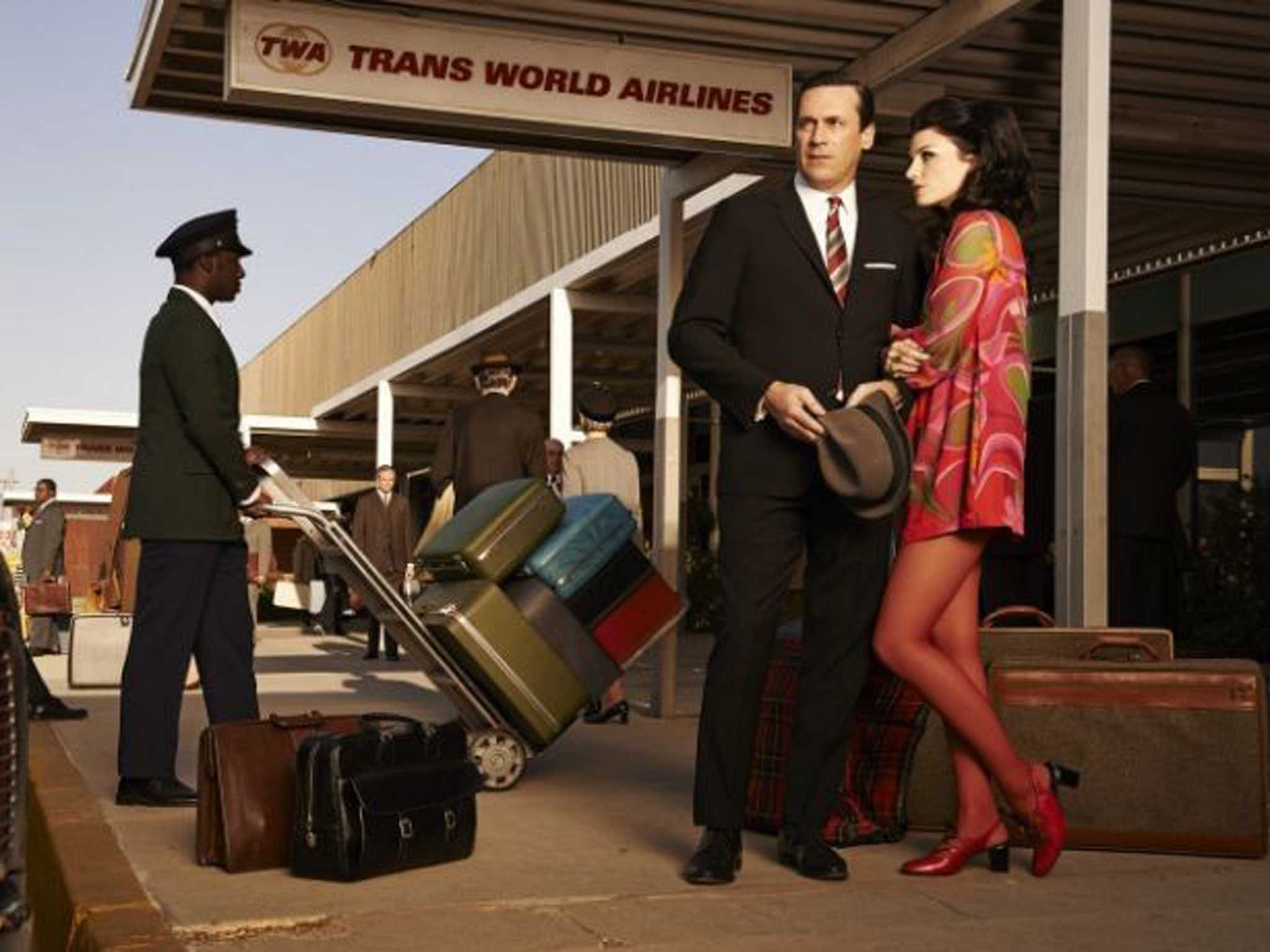Why LA is the Meryl Streep of cities and the West Coast’s answer to London’s Camden Market
One of the many great aspects of Mad Men is the skill and consistency with which it recreates 1960s New York


How’s this for a claim to fame? I live in LA, around the corner from the whorehouse where Don Draper grew up. At the end of the sixth series of Mad Men, Don, male mid-life crisis incarnate, drove his children to Pennsylvania to show them the dilapidated Victorian where he spent his teenage years. Only the house isn’t in Pennsylvania at all; it’s in Angelino Heights, Los Angeles, next-door to the house from Michael Jackson’s “Thriller”.
One of the many great aspects of Mad Men, which begins the first half of its seventh and final series on 13 April, is the skill and consistency with which it recreates 1960s New York. That feat is doubly impressive, given that almost the entire show is shot in LA. Don and Roger Sterling once enjoyed a liquid lunch at Cole’s, a historic LA bar; Don goes swimming at the LA Athletic Club; even the Draper residence is in Pasadena.
I’ve often thought downtown LA feels like pre-Giuliani New York, partly because its cycle of urban regeneration lags at least a decade behind Manhattan’s, and partly because most New York-set movies I watched as a child were probably filmed here. LA is the Meryl Streep of cities: she can play anywhere. As for that whorehouse, just days after its television appearance last summer, it was on sale for $600,000 (£360,000). I think that’s what they call gentrification.
High tide on Silicon Beach
Gentrification is a word you’ll often hear spat on the sidewalks of Venice Beach, where I lived until last November. Venice was once a haven for hippies, junkies and the homeless, scarred by street crime and gang violence. Today, GQ says its main drag, Abbot Kinney, is “the coolest block in America”, which means you can’t buy a T-shirt for less than $100 in any of its extortionate boutiques, and you can’t get a restaurant table on a Tuesday unless you’re Jay-Z.
The increased cost of living in this coastal community gets blamed on Google, which established its SoCal HQ two blocks from the beach in 2011. Other tech firms, notably Snapchat, have followed. Venice Beach is now being called “Silicon Beach”: gladly by some, venomously by others. It’s a small-scale version of a similar brouhaha in San Francisco, where Silicon Valley folk are said to be pricing out the creative and working classes.
The one spot still holding out against the rich hipster hordes is Venice Beach Boardwalk, the West Coast’s answer to Camden Market. Yet in the wake of a fatal hit-and-run incident last summer, City Hall is trying to civilise the Boardwalk with bollards, better lighting and security cameras, to the chagrin of long-time locals. This is where the Old Venice – vagrants, drum circles and dubious medical marijuana dispensaries – will make its final stand against the New Venice: tourists and tech multimillionaires. Best leave them to it, I reckon.
Top gun in the movies
California has some of the country’s strictest gun laws, and Hollywood’s liberal inhabitants tend to support them. Their films, on the other hand, make potent promotional tools for firearms manufacturers. In the recent Lone Survivor, a true story of military heroism, starring Mark Wahlberg, one character runs out of rifle ammunition and fires his Beretta pistol instead. The product placement was organised by LA-based brand integration firm Brand-in Entertainment, and this week an anonymous source told Fox News that Beretta paid $250,000 for the privilege.
In the same report, a gun dealer claimed sales of Glock handguns only took off after the 1990 release of Die Hard 2. Today the Glock is the weapon of choice for US law enforcement agencies, and enjoys regular screen outings in the likes of Taken and 24.
Much has been made of the conspicuous product placement in the recent 007 movies, which lingered on Bond’s preferred car, beer and wristwatch brands. But perhaps the best advertised item of all was his Walther PPK.
Unhinged bracket
This month I filled out my first March Madness bracket. March Madness is America’s annual, national college basketball tournament. A bracket is its equivalent of Fantasy Football. Imagine a month of boat races, and you’ll be no closer to appreciating its cultural magnitude.
The trouble with trying to understand American sports is you can’t just learn the rules. You also have to learn the stats. And once you’ve learned the stats, you have to learn the jargon. And as your brain struggles to retain the rules, stats and jargon like a man carrying one too many pints, you also have to muster the energy to care. Not knowing the first thing about basketball, I filled most of my bracket at random. I’m currently third in my league – out of three.
Mexican cartels cause the economy to take a dip
No March Madness viewing party would be complete without guacamole and salsa, which means I have an excuse to cancel mine: the price of limes in the US has doubled from around $50 a box last year, to $100. That’s partly due to bad weather in Mexico, where they’re grown. But it’s also because drug cartels in Michoacan are extorting avocado and lime producers – one, the notorious Knights Templar, even took control of the wholesale distribution centre where lime prices are set. Pass the hummus.
Tim Walker is Los Angeles correspondent for ‘The Independent on Sunday’

Join our commenting forum
Join thought-provoking conversations, follow other Independent readers and see their replies